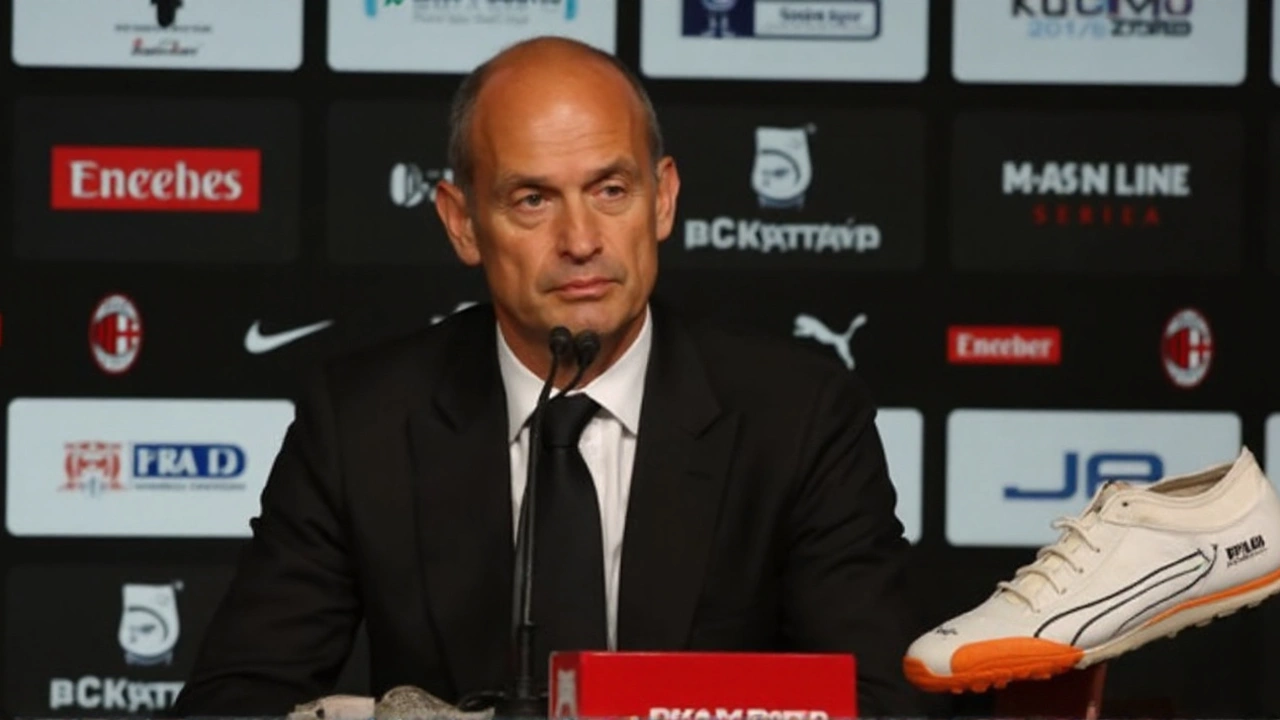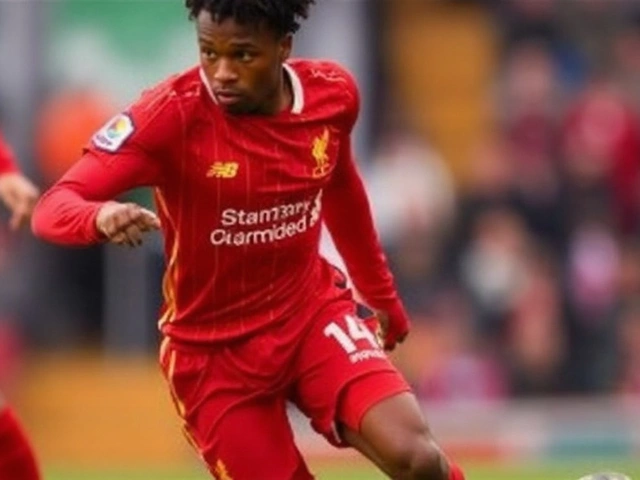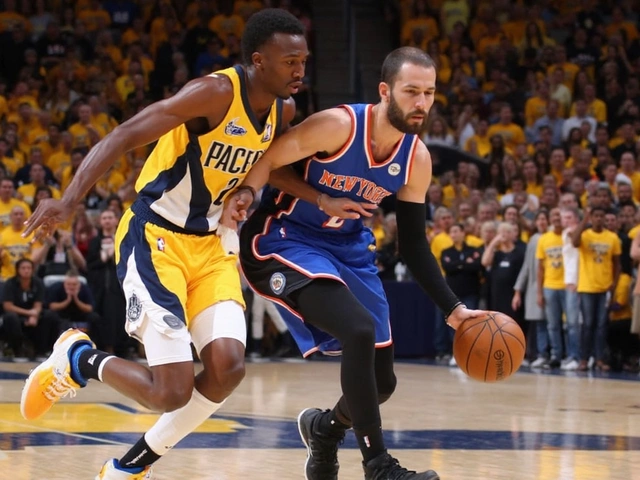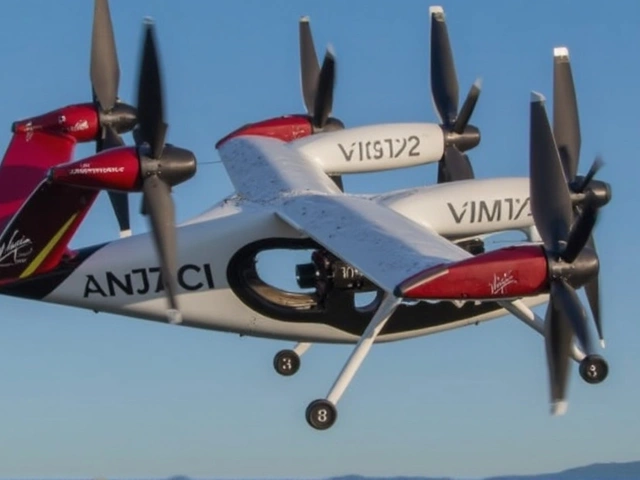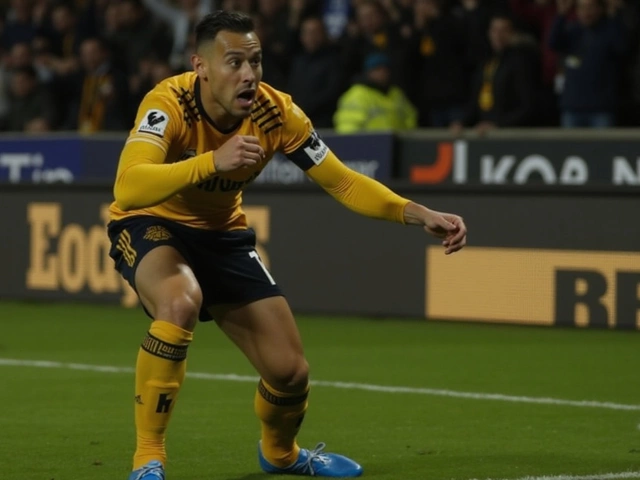Allegri’s selection puzzle meets a must-win night in Puglia
It’s not often AC Milan open a league campaign with a stumble and then walk straight into an away game shorn of their most dangerous winger. That’s where they are. After the opening-day defeat to Cremonese, Massimiliano Allegri arrives at Stadio Via del Mare juggling absences, form, and nerves ahead of AC Milan vs Lecce on August 29, 2025.
The headline problem is obvious: no Rafael Leão. Without his pace and one‑v‑one threat, Milan lose their easiest route up the pitch. Christian Pulisic is also out, taking another creative outlet off the board. Álex Jiménez and Ardon Jashari join the list, thinning the options on both flanks and in midfield. Allegri has dealt with injury pile-ups before, but this one bites right through the heart of his attack.
So he tightens the shape. The plan points toward a 3-5-2, with Mexican striker Santiago Giménez up top and Alexis Saelemaekers buzzing around him. It’s not just a numbers play—it’s an identity shift. With two natural wingers sidelined, Milan will lean on runners from deeper zones rather than trying to fake wide play with square pegs.
The midfield is the hinge. Luka Modrić starts to set the rhythm, and his presence changes the whole tempo conversation. He gives Milan a brain in possession, someone who can decide when to breathe, when to punch a pass through a line, and when to hold the ball a half-second longer so a wing-back can overlap. Ruben Loftus-Cheek and Youssouf Fofana bring legs and bite either side, plugging gaps and driving the ball into space when Lecce’s block loosens.
Wing-backs become the main source of width. On the right, Yunus Musah offers stamina and straight-line thrust; on the left, Pervis Estupiñan adds crossing and a left foot that can whip the ball into dangerous zones without overplaying. Both will be asked to start deep and arrive late, not stand high and wait; that’s a small tweak that matters against Lecce’s counters.
At the back, the trio of Fikayo Tomori, Matteo Gabbia, and Strahinja Pavlović looks set. Tomori’s recovery pace is Milan’s safety net when the wing-backs race on. Gabbia is the conservative piece—hold position, win first contacts, keep the line steady. Pavlović gives aerial presence and a long diagonal that can flip the field. Behind them, Mike Maignan remains the organizer, the loud voice, and the first pass under pressure.
The choices are not only tactical; they’re psychological. After Cremonese, confidence is the next injury to treat. Allegri needs players who can take the sting out of a tense away crowd and still risk the pass that breaks a compact block. That’s where experience matters. Modrić has lived through nights like this. Maignan, too. Their calm is part of the game plan.
There’s a twist on the other side: teenager Francesco Camarda, a Milan academy product on loan at Lecce, is in the frame to face his parent club. These are the strange scenes football throws up. He knows Milan’s habits; Milan know his. If he starts, the duel is as much emotional as tactical—how quickly he can shut out the backstory and play what’s in front of him.
Tactics, trade-offs, and the key battles that will decide the night
Lecce at Via del Mare is never a quiet evening. The heat, the noise, the scrappy momentum swings—it all pushes the game toward chaos. Allegri’s response is to try to keep the match in a controlled corridor. That starts with the first 15 minutes. Expect Milan to sit on the ball, move Lecce side to side, and keep the tempo below a sprint while the structure settles.
Without Leão, Milan will manufacture width differently. Rather than isolating a winger, they’ll pull Lecce’s midfield out of shape with quick wall passes into Modrić, then bounce play wide for a late run from Musah or Estupiñan. It’s not as explosive, but it can be cleaner: fewer turnovers, more cutbacks, and better shooting positions for Giménez and trailing midfielders.
This shape lives and dies on what happens when possession is lost. The risk is obvious. If a wing-back is high when the ball is turned over, Lecce can immediately attack the channel behind him. Milan’s “rest defense”—the two outside center-backs ready to sprint wide, Fofana staying alert to plug the first counter lane—has to function on autopilot. If it does, Milan can pin Lecce back and turn the match into a repeat pattern of pressure. If it doesn’t, Maignan is going to be busy.
The attack needs new reference points with Leão missing. Santiago Giménez’s movement is the compass. He likes to drag a center-back out of line, then snap across the near post when the cross comes. Saelemaekers’ job is to read that choreography—arrive free at the far post, or slide into the pocket Modrić opens with a disguised pass. Small timings, big rewards.
Set pieces could be a swing factor. Modrić on corners and Estupiñan on wide free-kicks give Milan two quality deliveries from different angles. Pavlović, Tomori, and Loftus-Cheek are obvious targets. Even if the first wave doesn’t score, those second balls can keep Lecce pinned and create the kind of broken-play chances that decide tight games.
There are selection wrinkles Allegri has to hold in his back pocket. If Milan need more control, he can tilt the 3-5-2 toward a 3-4-2-1 by letting Saelemaekers drop into the right half-space and asking Musah to play almost as a winger. If they’re chasing, he can flip to a back four—Tomori and Pavlović centrally, Gabbia off—so Estupiñan pushes high as a full-back and the midfield becomes a 2-3 behind Giménez. None of that needs a substitution; it’s all about touchline instructions and pictures the players already recognize.
The midfield duel is where this match breathes. Fofana’s first step into a challenge is the throttle. Win those duels and Lecce’s attackers see less of the ball in good areas. Lose them and Milan’s back line is defending with large spaces around them. Loftus-Cheek’s carrying through traffic matters, too; one strong run past the first presser can tilt the field and pull the entire Lecce block backward.
Then there’s the human layer. Allegri has to pick not just the best XI, but the calmest. Away games early in the season can get weird—rust, weather, and crowd energy create a mix that punishes hesitation. He’ll want players who make decisions at full speed and stay on script when pressure rises. Watch who takes early responsibility on the ball. That usually tells you how the night will unfold.
Key battles to watch:
- Tomori vs. Lecce’s focal striker: If Tomori wins first contacts and the footrace in behind, Milan’s line can hold higher and the team can compress play.
- Modrić vs. the first presser: One clean turn past that initial pressure opens the pitch and feeds runners. If he’s trapped, Milan get stuck.
- Musah/Estupiñan vs. Lecce’s wingers: Who wins the race to the byline? That duel decides whether Milan attack or defend the flanks.
- Giménez’s movement vs. Lecce’s center-backs: Near-post darts and blind-side runs will test Lecce’s concentration over 90 minutes.
The Camarda subplot is not just romantic—it’s tactical. If the teenager features, Lecce might look to play early into him to pin Gabbia and create layoff combinations for arriving midfielders. For Milan, the task is to deny him clean touches and force him into areas where Tomori can step in front and break. Young strikers thrive on rhythm; break it early and the game gets longer for them.
Conditions matter. Late August in Salento can sap legs quickly, so energy management is part of the plan. Expect controlled bursts rather than full-tilt pressing. Hydration breaks, if they come, are mini team talks. Coaches love them for resetting shape and nudging pressing triggers a few meters higher or lower depending on the flow.
Allegri’s bench becomes more important with the injuries stacking up. Even with options limited, he’ll likely hold one substitution for fresh legs at wing-back in the final 20 minutes and another for midfield balance—either to lock down a lead or roll the dice if chasing. Don’t be surprised if he trusts a versatile squad player to eat up awkward minutes in a hybrid role; these are the matches where utility men earn their stripes.
Pressure, of course, sits in the background. The league table is meaningless in week two, but narratives take root fast. A win steadies everything—training feels lighter, the buildup to the next fixture loses its edge, and the treatment room doesn’t feel like a headline. A draw keeps questions alive. Another defeat and the conversation shifts from selection to direction.
Probable Milan XI (3-5-2):
- Goalkeeper: Mike Maignan
- Defense: Fikayo Tomori, Matteo Gabbia, Strahinja Pavlović
- Midfield: Yunus Musah (RWB), Youssouf Fofana, Luka Modrić, Ruben Loftus-Cheek, Pervis Estupiñan (LWB)
- Attack: Santiago Giménez, Alexis Saelemaekers
What will we learn from this game? How Allegri wants to balance control and punch without his two marquee wide men. Whether Giménez can carry the line when the service is more measured than electric. If Modrić still dictates at Serie A pace with a new cast around him. And how quickly Milan can build a new left-sided threat when Leão isn’t there to stretch gravity itself.
One more detail to watch: the first reset after a turnover. If Milan immediately reorganize into their defensive shell and win the next duel, that’s a sign the structure is holding. If they scramble and foul to delay counters, the warning light is on. In matches like this, those little patterns—not just goals—tell you who is in charge of the story.
Allegri’s reputation was built on nights where plan A isn’t available. This is one of them. Patch the gaps, trust the core, and make the margins count. In Puglia, those margins are usually the game.
